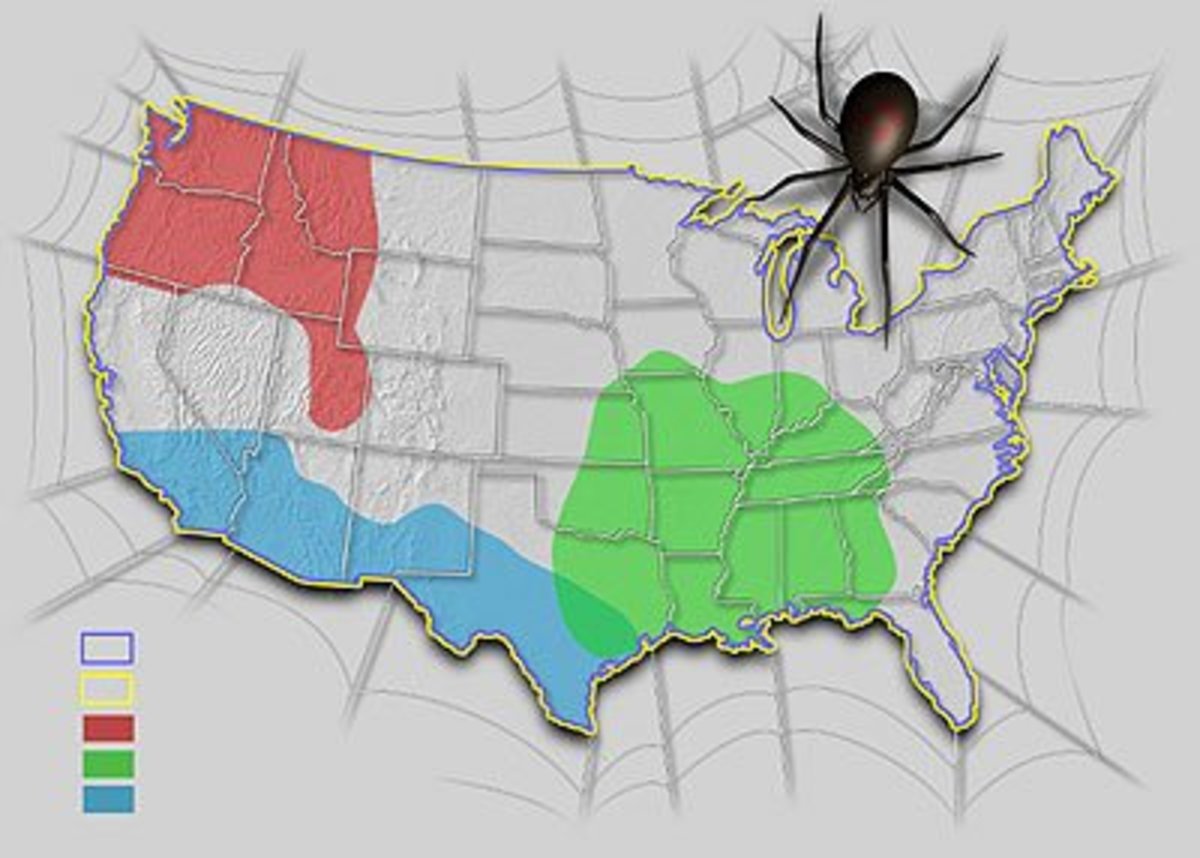Wisconsin Brown Recluse Map: Are You at Risk?
Wisconsin, with its diverse landscapes and four distinct seasons, offers a lot to love. But lurking alongside the beauty of the Badger State are potential dangers, including the unsettling presence of the brown recluse spider. While the brown recluse isn’t as common in Wisconsin as in other parts of the United States, knowing the facts and understanding the risk level is crucial for residents and visitors alike. This article will delve into the brown recluse situation in Wisconsin, providing you with the information you need to assess your risk and stay safe.
The Brown Recluse Spider: An Overview
The brown recluse ( Loxosceles reclusa) is a venomous spider known for its shy nature and distinctive violin-shaped marking on its cephalothorax (the part of the spider that combines the head and thorax). Their bite can be serious, causing localized tissue damage and requiring medical attention. Understanding their habits and habitat is key to minimizing encounters.
- Appearance: Brown recluse spiders are typically light brown to tan in color. They have six eyes arranged in pairs, unlike most spiders that have eight.
- Habitat: They prefer dry, undisturbed locations, such as:
- Attics
- Basements
- Closets
- Woodpiles
- Under rocks and logs
- Stored boxes and belongings
- Behavior: Brown recluse spiders are nocturnal and prefer to avoid confrontation. Bites usually occur when the spider is accidentally trapped or threatened.
Understanding the Wisconsin Brown Recluse Map: Where Are They Found?
Unlike some states, Wisconsin doesn’t have widespread, established populations of brown recluse spiders. However, there have been confirmed sightings, and it’s important to understand the nuances of the risk.
- Isolated Sightings: Most reports in Wisconsin are of isolated sightings, often involving spiders that have been transported accidentally via:
- Boxes shipped from infested areas (e.g., the Midwest and Southern states)
- Firewood
- Used furniture
- No Established Colonies: At this time, there’s no evidence of significant, self-sustaining brown recluse colonies established in Wisconsin. This means the risk is generally lower than in states where they are endemic.
- Geographic Considerations: While a detailed, official “Wisconsin Brown Recluse Map” doesn’t exist, reports are more prevalent in areas with higher population density and increased commercial activity.
Assessing Your Risk in Wisconsin
While the risk is lower than in more heavily infested states, vigilance is still recommended. Here’s how to assess your risk:
- Location, Location, Location: If you live in or near areas with a history of sightings, or near businesses that receive goods from areas with brown recluse populations, your risk is slightly elevated.
- Home Inspection: Regularly inspect your home, especially:
- Attics and basements
- Storage areas
- Closets
- Behind furniture
- Outdoor Precautions: When working outdoors, be cautious around:
- Woodpiles
- Rocks
- Leaf litter
- Areas that haven’t been disturbed for a while
- Shipping and Receiving: Carefully inspect boxes and packages that arrive from potentially infested areas.
Brown Recluse Bite Symptoms and What To Do
If you suspect you’ve been bitten by a brown recluse, it’s essential to seek medical attention promptly, even if you’re unsure.
- Initial Symptoms:
- A stinging sensation
- Redness and swelling at the bite site
- Often, no pain initially
- Later Symptoms:
- Blistering
- Ulceration (open sore)
- Fever
- Chills
- Nausea
- Actionable Steps:
- Wash the bite area with soap and water.
- Apply a cold compress.
- Elevate the affected limb.
- Seek immediate medical attention. Be prepared to describe the spider if possible.
Prevention Strategies: Keeping Brown Recluse Spiders Away
Taking preventative measures can significantly reduce your risk:
- Seal Cracks and Openings: Seal any cracks or openings in your home’s foundation, walls, and around pipes.
- Reduce Clutter: Declutter attics, basements, and storage areas to eliminate potential hiding places.
- Use Insecticide: Consider using an insecticide labeled for spiders in areas where you suspect activity. Follow all label instructions carefully.
- Shake Out Clothing and Shoes: Before wearing clothes or shoes that have been stored, shake them out thoroughly.
- Professional Pest Control: If you have concerns or suspect an infestation, consider contacting a professional pest control service.
Conclusion: Staying Informed and Proactive
While the brown recluse spider is not a major threat in Wisconsin, awareness and proactive measures are crucial. By understanding their behavior, habitat, and the specific situation in Wisconsin, you can effectively minimize your risk. Regular inspections, preventative measures, and prompt medical attention in case of a bite are the keys to staying safe. Stay informed, stay vigilant, and enjoy the beauty of the Badger State with peace of mind.
Frequently Asked Questions (FAQs)
1. Are brown recluse spiders common in Wisconsin?
No, they are not common. While there have been confirmed sightings, there are no established, widespread colonies. The risk is generally lower than in states where they are endemic.
2. What should I do if I think I’ve been bitten by a brown recluse?
Wash the bite area with soap and water, apply a cold compress, elevate the affected limb, and seek immediate medical attention.
3. How can I prevent brown recluse spiders from entering my home?
Seal cracks and openings, reduce clutter in storage areas, use insecticide (following label instructions), and inspect boxes and packages from potentially infested areas.
4. What does a brown recluse bite look like?
Initially, a brown recluse bite may cause a stinging sensation with redness and swelling. Later, it can develop into a blister or ulceration. However, the appearance of a bite can vary.
5. Should I be worried about brown recluse spiders when camping or hiking in Wisconsin?
While the risk is relatively low, it’s always wise to be cautious. Inspect your gear and clothing, and avoid disturbing areas with potential hiding places like woodpiles and leaf litter.




